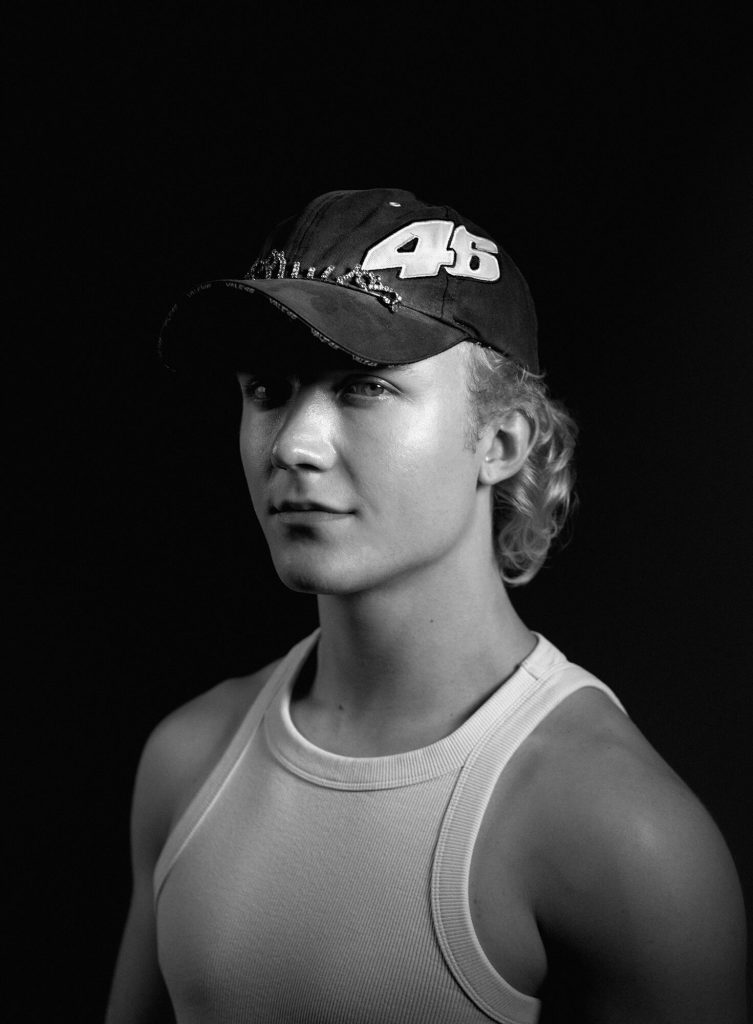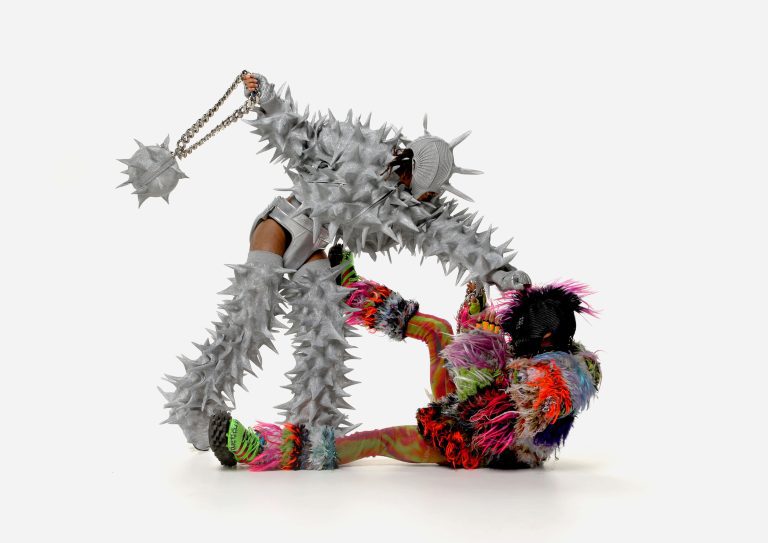What is the role of craft in a technology-driven world? The work of the young designer Leevi Ikäheimo is a surprising blend of traditional knitting techniques and new technology. His latest collection, NO PAIN NO GLAMOUR, which was presented at the Festival d’Hyères, impressed the jury with its vibrant colors and expressive shapes. In reality, there is more to each piece than meets the eye. To discover how he challenges the fashion industry’s body stereotypes and reintegrates traditional techniques through the modern lens of technology, we spoke to Leevi Ikäheimo.


hube: Can you tell us a bit more about your latest collection, “NO PAIN NO GLAMOUR,” and the inspiration behind it? What message are you conveying through it?
Leevi Ikäheimo: NO PAIN NO GLAMOUR is a collection that challenges the societal pressure of conforming to a specific body type, which is often reinforced through toys, action figures, and superheroes. It draws heavy inspiration from the vibrant clubwear worn during the early 2000s rave scene in Helsinki. Each look in the collection represents a unique character, forming my own toy collection. Initially, the collection may appear fun and outrageous, but upon closer inspection, it reveals a more nuanced narrative. Additionally, there is an influence from gay fetish wear and the fetishization of certain body types. For the show in Hyères, my aim was to create a high-energy party atmosphere for the audience, and I believe I succeeded. NO PAIN NO GLAMOUR is my first complete collection I’ve made and serves as my graduate project from Aalto University’s fashion program. I believe it perfectly encapsulates my interests, skills, and aesthetics.
h: Your collection addresses the idea of unrealistic body image standards, especially those promoted through toys for children. How do you see fashion playing a role in challenging or perpetuating these standards?
LI: Fashion has a big role in how we showcase and define different body types. With this collection, I wanted to playfully show how action figures can affect a man’s self-image in a ridiculous way. The outfits represent what we might look like in an alternate world if we followed those standards. In my future work, I aim to create clothes that are inclusive and reflect a variety of body types. I hope we’ll start to see a significant shift in model selection, especially in men’s fashion shows. While there’s been progress in showing diverse body types in women’s shows, there’s still a long way to go for men’s fashion.

